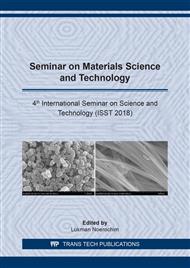p.185
p.193
p.199
p.209
p.215
p.221
p.228
p.234
p.240
Effect of High Loading Glycine on Fe2O3 Nano Oval as Anode for Lithium-Ion Battery
Abstract:
In this work, Fe2O3 nanooval is successfully synthesized with variation of glycine composition of 9, 12, and 15 mmol at hydrothermal temperature of 160 °C. The Fe2O3 nanooval is indexed by XRD as α-Fe2O3. SEM and TEM images show that the 12 mmol of glycine has the largest diameter with the perfect nanooval form. Nyquist plot shows that the 12 mmol of glycine sample has the best conductivity value of 8.26x10-5 S/m. The CV of sample 12 mmol delivers the best intercalate/de-intercalate with ΔV of 0.82 V. The 12 mmol sample shows the largest specific discharge capacity of 631.62 mAh/g. It is attributed to high conductivity and high kinetics reaction of Li ion during charge-discharge process. Therefore, Fe2O3 nanooval is a promising candidate as anode for lithium-ion battery.
Info:
Periodical:
Pages:
215-220
Citation:
Online since:
July 2019
Authors:
Keywords:
Price:
Сopyright:
© 2019 Trans Tech Publications Ltd. All Rights Reserved
Share:
Citation:


